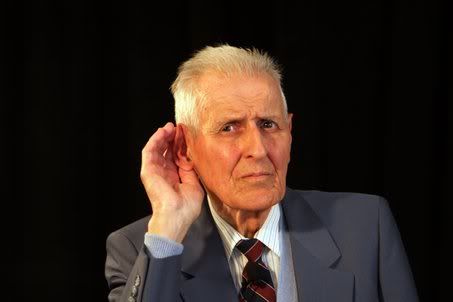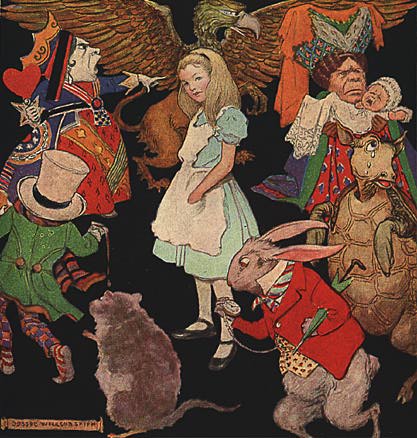Sunday, March 28, 2010
Friday, March 19, 2010
The Girl In Hitchcock's Shower
 From the author of Zodiac comes The Girl in Hitchcock's Shower, a shockingly true chronicle of the life and times of Marli Renfro, (best known for her role in Psycho as Janet Leigh's nude body double) and a dweeby serial killer named Sonny, whose resemblance to Norman Bates was eerie, to say the least. Set in the seedy Hollywood of the 60s, Marli and Sonny's odd lives would end up crossing in the strangest and most unexpected of ways.
From the author of Zodiac comes The Girl in Hitchcock's Shower, a shockingly true chronicle of the life and times of Marli Renfro, (best known for her role in Psycho as Janet Leigh's nude body double) and a dweeby serial killer named Sonny, whose resemblance to Norman Bates was eerie, to say the least. Set in the seedy Hollywood of the 60s, Marli and Sonny's odd lives would end up crossing in the strangest and most unexpected of ways. Wednesday, March 17, 2010
Wonderland In Spring- New York 3/19/2010
Sunday, March 14, 2010
Lucifer's Masquerade
Thursday, March 11, 2010
Top Halloween Tunes to Freak out Your Eardrums
Wednesday, March 10, 2010
Emo and goth music to be made illegal in russia
The Russian government is in the process of drafting a law to make emo and goth music illegal.
Last month a parliamentary committee was convened to discuss a draft proposal of the Russian government's Government Strategy In The Sphere Of Spiritual And Ethical Education bill, the details of which were leaked to The Moscow Times. The newspaper subsequently reported that, among other things, the draft bill dubbed the musical movements a "dangerous teen trend" and called for emo and goth websites to be regulated and young people dressing like emos or goths to be banned from entering schools and government buildings.
The newspaper interviewed one of the bill's authors, Igor Ponkin from the Russian Interior Ministry's Public Oversight Council. Ponkin called emo a "social danger" and "a threat to national stability" and said the bill is a reaction to teen suicides such as the tragic death of British teenager Hannah Bond.
"This type of behaviour is a crucial part of emo ideology," said Ponkin. "Of course there are emo teens who just listen to their music. But our actions are not directed at them but rather at those who also hurt themselves, commit suicide and promote those acts."
The Moscow Times also interviewed psychologist Inna Cherkova who said:
"Suicide is not a symptom of emo culture. I work with other teens too, and every group has emotionally troubled kids."
However, the bill is expected to become law in Russia before the end of the year.
Vau De Vire Event!- San Francisco
Tuesday, March 9, 2010
Woman comes to life during autopsy
New Book! The Addams Family- America's Favorite Gothic Family



Monday, March 8, 2010
10 Songs about Alice in Wonderland
Sunday, March 7, 2010
Saturday, March 6, 2010
'Zombies' have free speech rights too, US court rules

WASHINGTON (AFP) – They're said to utter little more than an occasional groan, but zombies -- the blood-drenched monsters of Hollywood "B" movies -- still have a right to free speech, a US court ruled this week.
An appeals court in the northern US city of Minneapolis, Minnesota on Wednesday allowed a group of zombies -- or rather, several protesters costumed as such -- to press ahead with their lawsuit against police who arrested them for disorderly conduct.
The appeals court overturned a lower court in finding that the group of seven "zombies" had been wrongfully detained during a 2006 shopping mall protest against consumerism.
The three-judge panel, by a two-to-one vote, ruled that Minneapolis police lacked probable cause to arrest the demonstrators for disorderly conduct.
At the time of the protest, the plaintiffs were wearing makeup that gave them a "living dead" look: white face powder, fake blood and black circles around their eyes.
They lurched stiff-legged through the halls of the mall urging shoppers to "get your brains here" and "brain cleanup in aisle five."
In various bags, the protesters carried audio equipment including loudspeakers and wireless phone handsets, which police had described as "simulated weapons of mass destruction."
The judicial panel upheld the lower court in dismissing the plaintiffs' claims of "false imprisonment" and "First Amendment retaliation" by Minneapolis police after being put in jail for two nights.
But the appeals court sided with the protesters in ruling that police had no reason to imprison them simply for "dressing as zombies, and walking erratically in downtown Minneapolis," the court decision said.
"An objectively reasonable person would not think probable cause exists under the Minnesota disorderly conduct statue to arrest a group of peaceful people for engaging in an artistic protest by playing music, broadcasting statements (and) dressing as zombies," the appeals court ruled.
The decision allows the protesters to revive their lawsuit against Minneapolis and its police, which according to the Star Tribune newspaper seeks damages of at least 50,000 dollars per person arrested.
Friday, March 5, 2010
Alice
Thursday, March 4, 2010
The Mad Hatter
Wednesday, March 3, 2010
The Queen of Hearts
Tuesday, March 2, 2010
The White Rabbit
Monday, March 1, 2010
Dr. Death

Dr. Jack Kevorkian has been known as "Dr. Death" since at least 1956, when he conducted a study photographing patients' eyes as they died. Results established that blood vessels in the cornea contract and become invisible as the heart stops beating. In a 1958 paper, he suggested that death row inmates be euthanized, and their bodily organs harvested. In 1960, he proposed using condemned prisoners for medical experiments.
In 1989, a quadriplegic, too handicapped to kill himself, publicly asked for assistance, and Dr. Kevorkian began tinkering on a suicide machine. But a different patient -- Janet Adkins, a 54-year-old with Alzheimer's -- was the first to test the device. It worked. Kevorkian then provided services to at least 45 and possibly more satisfied customers.
In 1997, however, the U.S. Supreme Court ruled that Americans who want to kill themselves -- but are physically unable to do so -- have no Constitutional right to end their lives. Kevorkian was sentenced to 10-25 years in prison, but was paroled in 2007, in failing health and nearing his own death.




















